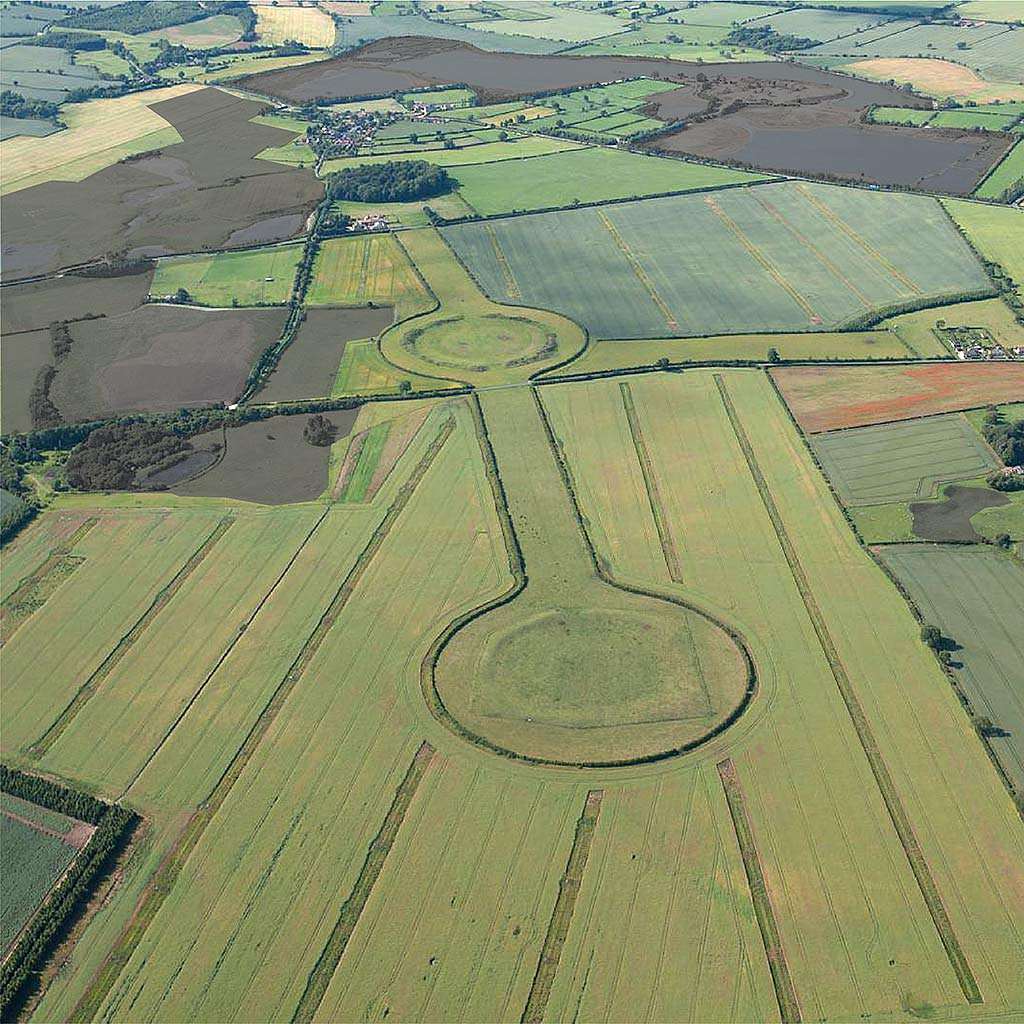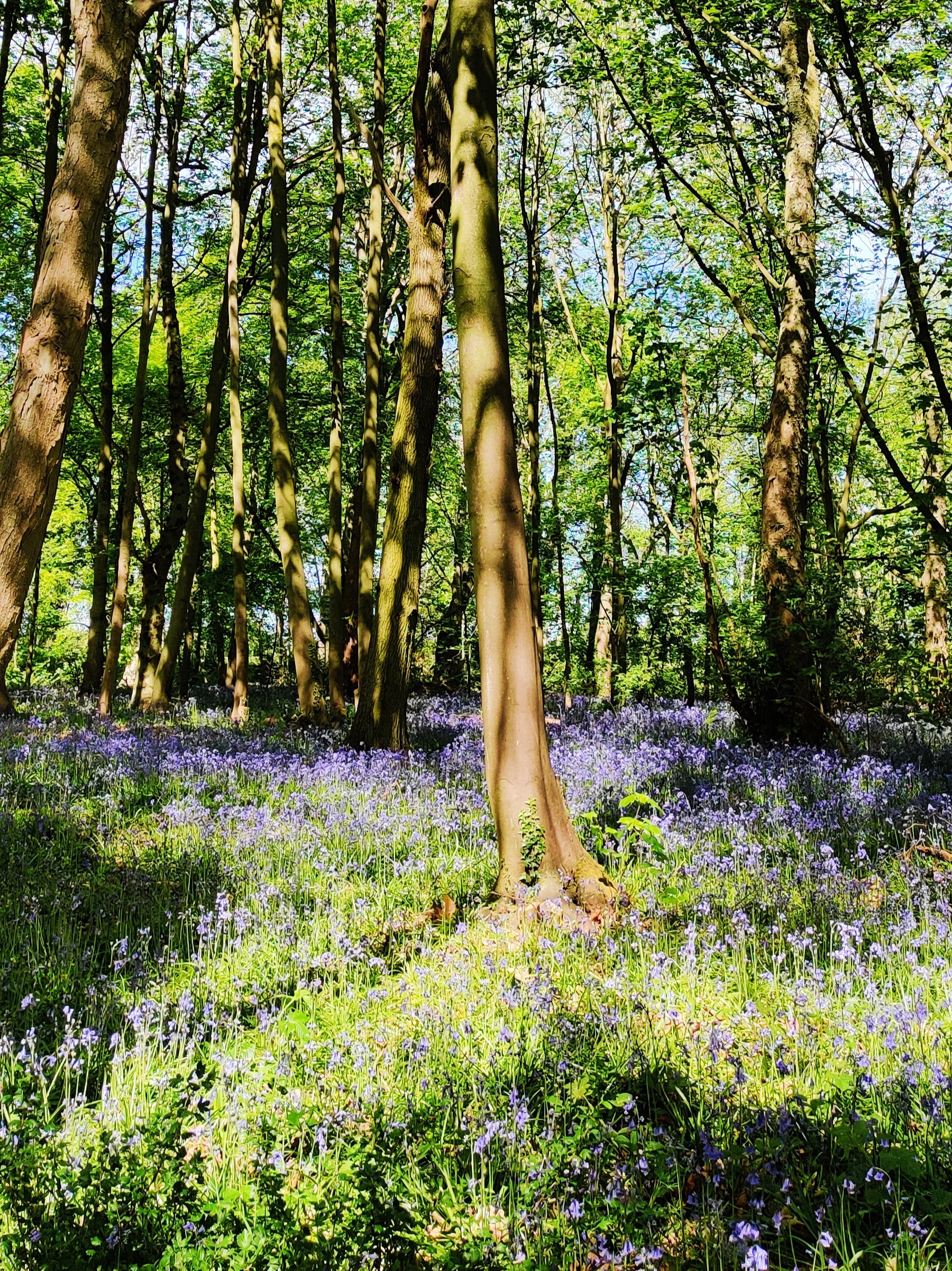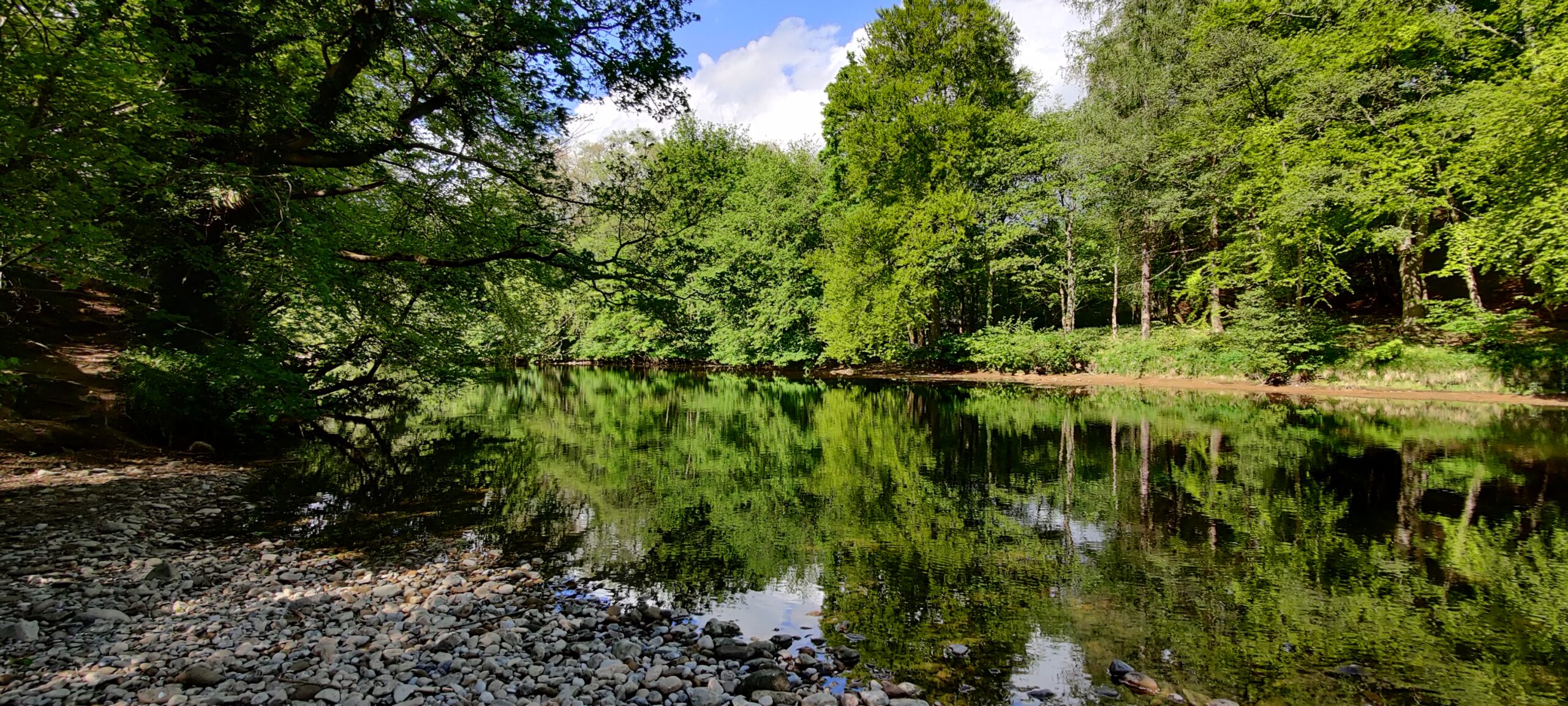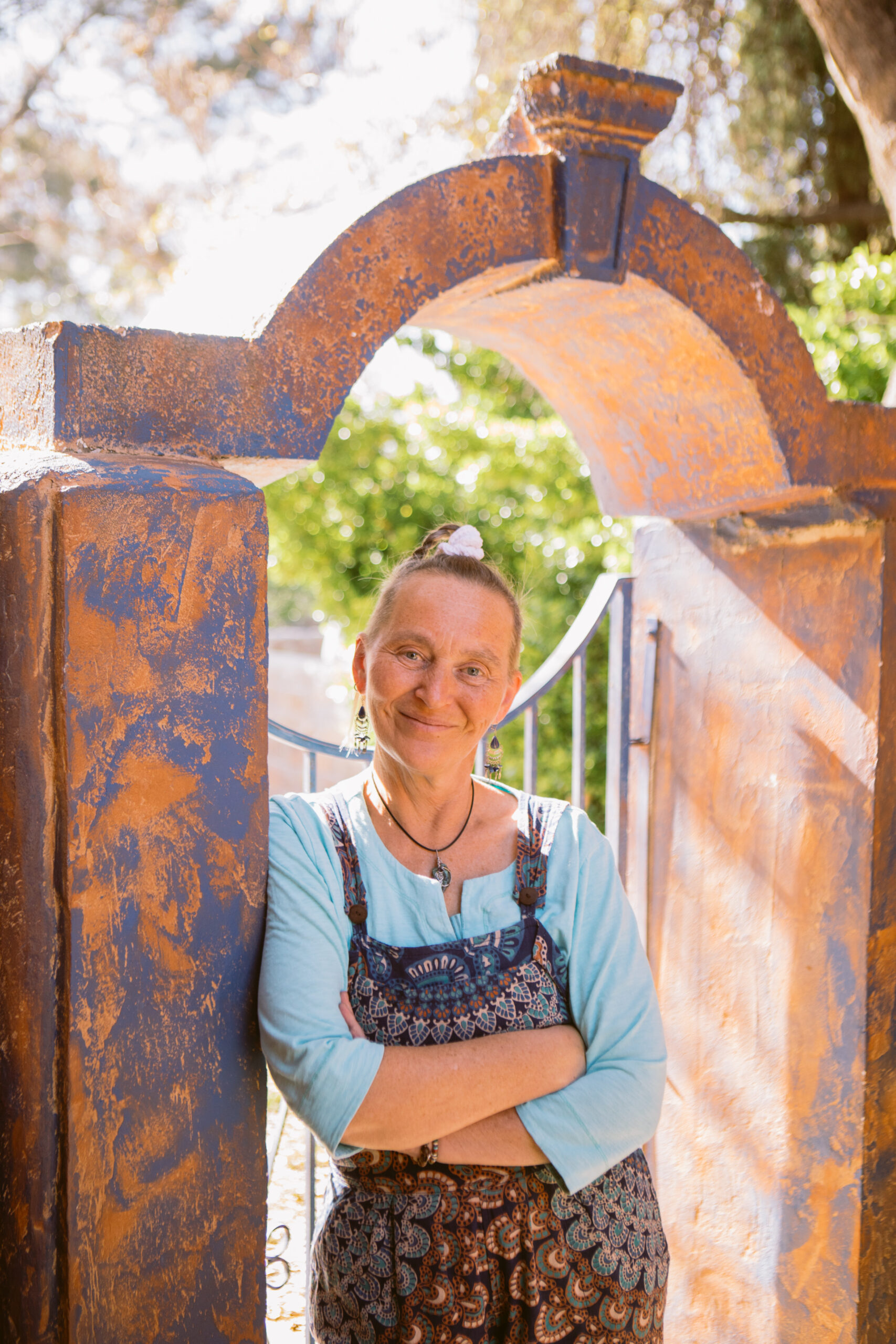 by Naraya Naserian | May 25, 2025 |
by Naraya Naserian | May 25, 2025 |
Britain’s Henge Capital
Somewhere in North Yorkshire, between the small towns of Ferrybridge and Catterick, a distance of approx. 50 miles apart, lies the Vale of Mowbray, a little-known sacred landscape claimed by some to have been neolithic Britain’s henge capital. Hardly recognizable beneath the infringements of “modern civilization” and asking one to engage subtle senses long not used, it boasts the largest formation of the largest henges as well as some of the largest monoliths found anywhere in Britain. This was the homeland of the Brigantes, a conglomeration of Celtic tribes that inhabited this section of what would become Northern England before the Roman invasion. It also is the land of their Goddess Brigantia, later “exported” to other parts of the world, most prominently Ireland, where to this day she is revered under the name of Brigit or Brigid.
I recently had the privilege and pleasure to explore a few of these ancient Mowbray Vale monuments, namely the Thornborough Henges and the Devil’s Arrows.
The Thornborough Henges
4.500-5.000 years ago, on an upland plateau framed by the meandering rivers Ure and Swale, neolithic communities built three monumental henges. These are circular earthwork enclosures which were used not as settlements or fortifications but exclusively for tribal gatherings, ceremonies, and rituals to commune with spiritual forces through offerings and oracular activity. Archaeological evidence suggests that these henges played an important role for at least 2.000 years, well into the Bronze Age when burial mounds were also erected here.
Specific information is scarce, but English Heritage, the organization now concerned with preserving the site, states:
“Like other henges across Britain, the Thornborough henges are each surrounded by an earthen bank. The banks at Thornborough originally stood up to 4 metres high, and were broken by two opposing entrances. We know from excavations that these inner banks were probably plastered with gypsum, a mineral dug from nearby pits, which would have made them a striking brilliant white.
Today the henge earthworks are eroded and have been damaged by quarrying and ploughing. The northern henge is relatively well preserved, however, as its dense tree cover has protected it from intensive agriculture. Its surviving earthworks show the impressive scale of the monuments when they were first built. The inner ditch is still up to 2.6 metres deep and some 20 metres wide, and the main bank survives up to 3 metres high and 18 metres wide.”
Each henge is about 250m in diameter and the entire 3-henge monument stretches out over one mile and is apparently aligned with the belt stars of Orion. The original connecting avenue is not accessible due to private land issues, but i experientially walked all three henges on a sunny Day in early May, when in ancient times, the Beltane festivals and fertility rites would likely have been in full swing. Even now, a Beltane festival is held around the central henge each year. Sadly, because High Priestess and Arch Druid succession lines have been distorted and severed long ago, there is no ceremony involved anymore and not even the customary Beltane fires and dances are happening. To me, the whole affair felt more like a New Cage inversion, and after checking it out, i chose to stay well away from it.
However, engaging those subtle senses mentioned above, one surely feels the throbbing heartbeat of this sacred land, a coming together of Divine Feminine and Divine Masculine energies, possibly intertwining to create a substantial vortex. Though i have not been able to verify this, i suspect the henges are also sitting on a powerful 4th Order Leyline Node as mapped out by eminent Geobiologist Rory Duff. Especially inside the wooded northern henge, awash with carpets of bluebells when i visited, High Magic is aLIVE and one can easily get disoriented and even cross the veil into the Otherworlds, those multi-dimensional realms beyond time and space where fairies, woodland elves and dragons live …
The Devil’s Arrows
At the time of my visit, i had not yet been aware that the Thornborough Henges do not stand in isolation but are embedded in the greater landscape of The Sacred Vale. Equally part of this landscape are the standing stones known under the abominable name “The Devil’s Arrows”.
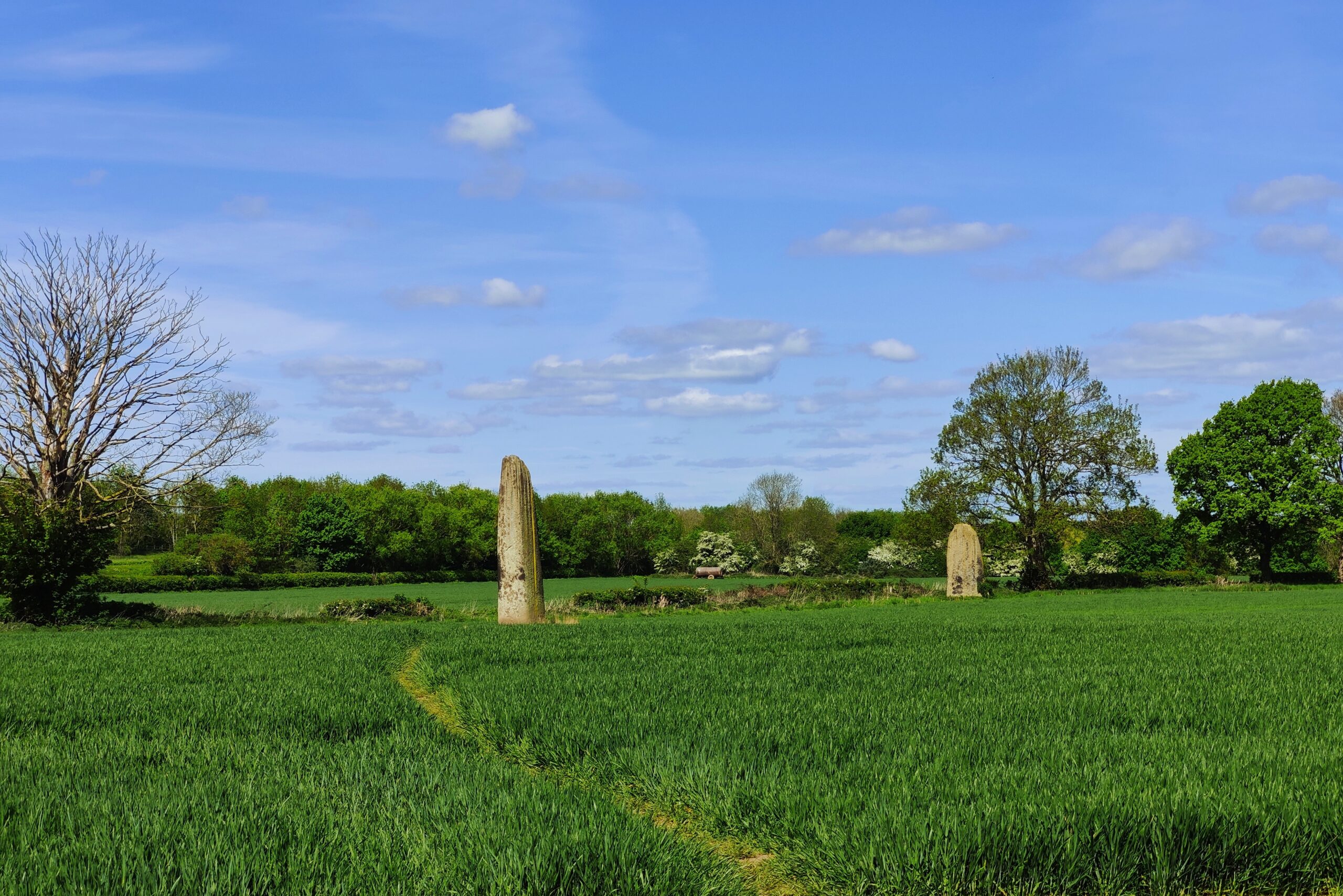 Utterly unceremoniously located right next to the A1 motorway, these monoliths are just a few miles south of Thornborough Henges and aligned in the same way, on a roughly north-west to south-east axis. Historical accounts going as far back as the 16th century mention between 4 and 7 stones in a row, but only three of them remain standing today. All three can be accessed – the two pictured here with permission of the farmer in who’s field they stand, and the third one just across the road which leads into Boroughbridge. This is the biggest stone row anywhere in the British Isles.
Utterly unceremoniously located right next to the A1 motorway, these monoliths are just a few miles south of Thornborough Henges and aligned in the same way, on a roughly north-west to south-east axis. Historical accounts going as far back as the 16th century mention between 4 and 7 stones in a row, but only three of them remain standing today. All three can be accessed – the two pictured here with permission of the farmer in who’s field they stand, and the third one just across the road which leads into Boroughbridge. This is the biggest stone row anywhere in the British Isles.
According to Yorkshire antiquarian Edmund Bogg (1895) quoted by The Northern Antiquarian:
“Peter Franck, a fisherman who travelled much about the world to enjoy his sport, came to Boroughbridge in 1694 and says he saw seven of these standing stones, Dr Stukeley mentions five, and John Leyland, in his travels, saw ‘four great stones wrought by man’s hands,’ but no inscription upon them. Camden, in 1592, saw four, but one of them at the time was thrown down, ‘for,’ says he, ‘the accursed love of gain.’ Part of this one is still to be seen, built into the Peggy Bridge … this goes far to prove — and I have very carefully considered the question and examined the ground — that the original number of stones was far greater, and reached from the Yore, in equal distances to the Tudland of Leyland’s time, or the Staveley Beck of today. If this argument is correct, 2000 years ago there would be a line of at least 12 standing monoliths guarding the western approach to Isur Brigantium” (the Brigante’s capital, present day Aldborough).
I kid you not: Ranging in height between 5.5m and 6.85m (with another 1.5-2m going into the ground), these monoliths are huge! In fact, they are way taller than any standing stones i’ve seen in this lifetime, dwarfing more popular counterparts such as the Callanish Stones and even Stonehenge.
Much more about this sacred landscape, it’s monuments and the people who lived here, connecting and celebrating the Mysteries of Earth and Sky, remains to be uncovered. But during this Great Turning of The Ages, despite our rudimentary knowledge and limited understanding, for some of us there are deep soul roots and lifetimes upon lifetimes of sacred connection with these ancient times, people and places to be re-activated and – whether solo or in community – rebirthed into a contemporary framework of living, vibrant Service to Spirit – one step, one deep-dive exploration, one sacred ceremony, one soul remembrance at a time!
In any case, to finish one’s exploration with a little ceremony of sacred sound and fire offering and a cleansing skinny cold-water plunge in one of the remotest bends of the crystal clear River Ure, with only an otter for company, is not a bad idea …

